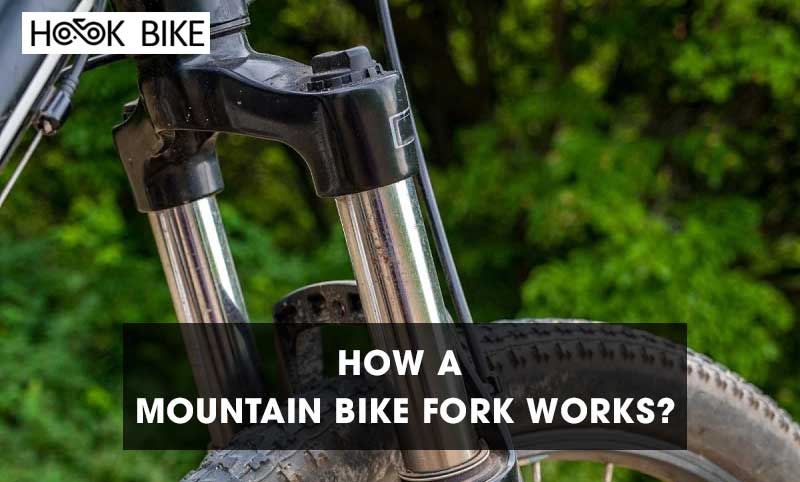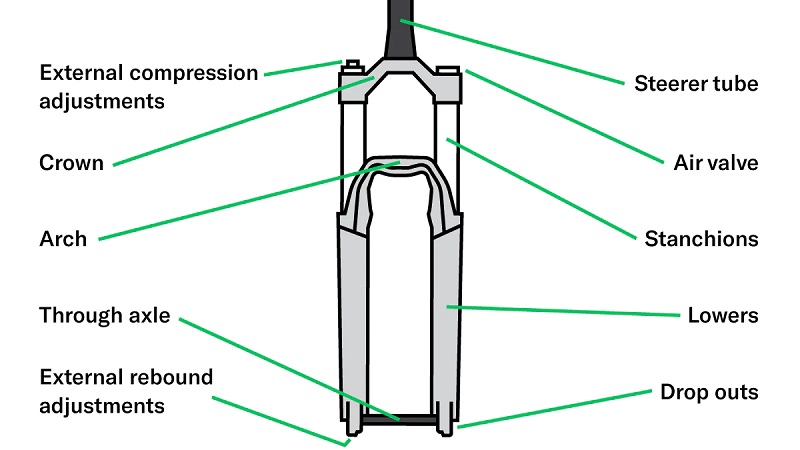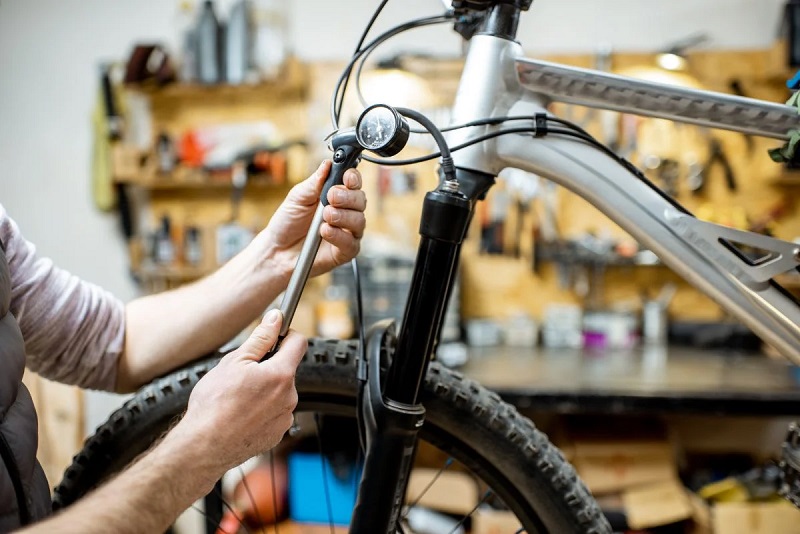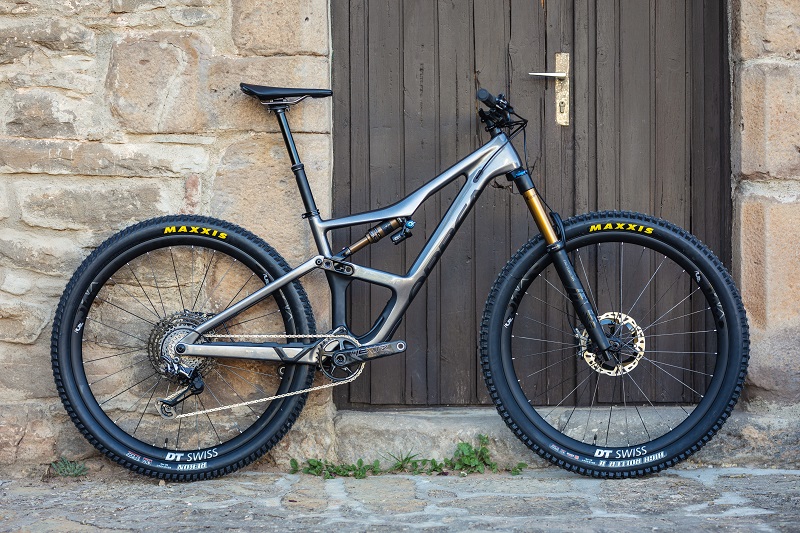Parts
How a Mountain Bike Fork Works?
When it comes to the world of mountain biking, one of the most crucial components of your ride is undoubtedly the fork. A quality mountain bike fork can make the difference between a smooth, controlled descent and a bone-rattling, teeth-chattering ordeal. In this comprehensive guide, HookBike will delve deep into how a mountain bike fork works, aiming to provide you with a thorough understanding of this critical piece of equipment.
Demystifying the Mountain Bike Fork
Demystifying the mountain bike fork is essential for any avid rider looking to understand and optimize their bike’s performance. The fork is a critical component of your mountain bike, responsible for absorbing impacts, providing control, and influencing the overall ride quality. In this guide, we’ll break down the key aspects of mountain bike forks to help you make informed choices and maintain your bike effectively.
What is a Mountain Bike Fork?
A mountain bike fork is a crucial component of a mountain bike that connects the front wheel to the frame. It serves several essential functions:
- Suspension: One of the primary functions of a mountain bike fork is to provide suspension. It absorbs impacts and shocks from rough terrain, such as rocks, roots, and uneven trails. This suspension helps maintain traction, control, and rider comfort while riding off-road.
- Steering and Control: The fork plays a critical role in steering and controlling the bike. It allows the front wheel to pivot, making it possible to change direction and navigate obstacles effectively. The fork’s design and stiffness significantly impact the bike’s handling and responsiveness.
- Wheel Attachment: The fork holds the front wheel securely in place, ensuring it remains aligned with the frame. Proper alignment is essential for stable and predictable handling.
The choice of a mountain bike fork depends on your riding style, terrain, and personal preferences. Riders who tackle rough trails or engage in downhill or enduro riding typically prefer suspension forks for their ability to absorb impacts and improve control. On the other hand, riders who prioritize lightweight setups or plan to ride on smoother surfaces may opt for rigid forks.

Popular Types of Mountain Bike Forks
Mountain bike forks come in various types, each designed to cater to different riding styles and preferences. Here are some of the most common types:
- Rigid Forks: These are non-suspension forks, typically found on entry-level mountain bikes or those designed for smooth city riding. They offer no suspension, relying solely on the bike’s tires for shock absorption.
- Hardtail Forks: Hardtail forks have front suspension only, meaning they have a suspension fork in the front but not in the rear. This configuration is common on cross-country bikes and provides a good balance between efficiency and comfort.
- Full Suspension Forks: These forks have both front and rear suspension, offering the most cushioning and control, especially on challenging downhill trails and technical terrains.
Now that we’ve covered the basics let’s dig deeper into the inner workings of a mountain bike fork.
See more: are all bike forks the same size

The Anatomy of a Mountain Bike Fork
The anatomy of a mountain bike fork consists of several components, each serving a specific purpose to provide suspension, control, and overall performance. Understanding these components can help you make informed decisions when choosing a fork and performing maintenance. Here’s a breakdown of the key parts of a typical suspension mountain bike fork:
Crown
The crown is the upper part of the fork that connects to the bike’s head tube. It provides stability and houses the steerer tube.
Steerer Tube
The steerer tube is the part of the fork that attaches to the bike’s head tube through the headset. It’s inserted into the head tube and allows the fork to pivot for steering. The top of the steerer tube is usually threaded or has a star nut for attaching the stem and handlebars.
Stanchions
Stanchions are the two parallel, cylindrical tubes that extend downward from the crown. They slide inside the lower legs and contain the fork’s suspension components. The upper portion of the stanchions is typically exposed and visible. The lower portion is usually hidden within the lower legs.
Lower Legs (Fork Legs)
The lower legs are the lower part of the fork, and they house the lower bushings and dropouts. They attach to the stanchions and provide stability and support to the entire fork.
Dropouts
Dropouts are located at the very bottom of the fork legs and are where the front wheel’s axle is secured. They come in various designs, including quick-release and thru-axle options. Thru-axles are becoming increasingly common for their improved stiffness and security.
Seals and Dust Wipers
Seals and dust wipers are essential components that prevent dirt, debris, and moisture from entering the fork’s internals. They help maintain smooth operation and prolong the life of the suspension components.
Suspension Springs
The suspension fork uses springs to absorb impacts and provide suspension. There are two primary types of springs used in mountain bike forks:
Coil Spring
A metal coil provides the suspension force. Coil springs are known for their consistent performance but may require different springs for riders of varying weights.
- Air Spring: Air forks use compressed air as the spring medium. They are highly adjustable, allowing riders to fine-tune the fork’s stiffness by adjusting air pressure.
- Damping System: The damping system controls how the fork reacts to compression and rebound forces. It ensures that the fork doesn’t bounce excessively after absorbing impacts. Common damping systems include hydraulic and mechanical designs, often featuring adjustment knobs for compression and rebound damping settings.
Crown Race
The crown race is a small, specially shaped ring that sits at the base of the steerer tube and interfaces with the bike’s headset bearings, allowing for smooth steering.
Travel Adjustment
Some forks offer the ability to adjust the amount of suspension travel, allowing riders to switch between shorter and longer travel settings. This can be useful for optimizing performance on different types of terrain.
Brake Mounts
Forks are often equipped with mounts for disc brakes. These mounts are usually found on the lower legs and are compatible with different brake rotor sizes.

Understanding the anatomy of a mountain bike fork is essential for choosing the right fork for your riding style, performing maintenance, and making adjustments to optimize your bike’s performance on the trail. Keep in mind that fork designs and features may vary between manufacturers and models, so it’s essential to consult the manufacturer’s documentation for specific details and maintenance guidelines.
How a Mountain Bike Fork Works?
A mountain bike fork works by providing suspension and damping to absorb impacts and vibrations from rough terrain, allowing the rider to maintain control and comfort while riding off-road. Here’s how a mountain bike fork functions in action:
Impact Absorption
When you ride your mountain bike on uneven terrain, the front wheel encounters various obstacles like rocks, roots, bumps, and drops. These impacts generate forces that travel through the fork’s front wheel and into the fork itself.
Compression
As the front wheel encounters an obstacle, the fork’s suspension springs (coil or air) compress to absorb the impact force. The compression of the springs allows the fork to compress and absorb the energy from the hit, preventing it from directly transferring to the rider’s arms and upper body.

Damping
The fork’s damping system plays a crucial role in controlling the speed at which the suspension compresses and rebounds. It helps prevent the fork from “bouncing” after absorbing an impact. Damping is essential for maintaining control and stability. There are typically two types of damping adjustments: compression damping and rebound damping.
- Compression Damping: This controls the speed at which the fork compresses when you hit an obstacle. Too little compression damping can result in a “spongy” feeling, while too much can make the fork feel harsh. Riders can adjust compression damping to match their riding style and terrain.
- Rebound Damping: Rebound damping controls the speed at which the fork returns to its extended position after compressing. Proper rebound damping ensures that the fork doesn’t spring back too quickly or too slowly, affecting control and traction. Like compression damping, rebound damping is also adjustable to suit different riding conditions.
Wheel Contact
Throughout the suspension cycle, the fork maintains contact between the front wheel and the ground. This contact is essential for traction, control, and steering. The fork helps the wheel follow the contours of the terrain while minimizing the loss of traction.
Rider Comfort and Control
By absorbing impacts and minimizing vibrations, the mountain bike fork enhances rider comfort. It allows you to stay in better control of your bike, making it easier to navigate technical terrain, maintain balance, and handle obstacles.

Terrain Adaptation
Modern mountain bike forks often come with features like travel adjustment, which allows riders to change the amount of suspension travel on the fly. This adaptability is beneficial for optimizing performance on different types of terrain. For instance, you might reduce travel for climbing and increase it for descents.
Stiffness and Handling
The fork also plays a role in the overall stiffness and handling characteristics of the bike. A well-designed fork provides precise steering and stability, allowing you to confidently tackle challenging trails.
A mountain bike fork’s primary function is to absorb impacts and vibrations from rough terrain while providing control, comfort, and traction to the rider. It achieves this through a combination of suspension springs, damping systems, and adjustments that work together to ensure a smooth and controlled riding experience, even on challenging and technical trails.
Maintaining Your Mountain Bike Fork
To ensure your mountain bike fork continues to perform optimally, regular maintenance is essential. Here are some tips:
- Clean and Lubricate: Regularly clean and lubricate the stanchions to prevent dirt and grime from affecting the fork’s performance.
- Inspect Seals: Check the seals for any signs of wear or damage. Damaged seals can lead to oil leakage and reduced performance.
- Monitor Air Pressure: If you have an air spring fork, check the air pressure regularly to maintain the desired level of sag and responsiveness.
- Service Intervals: Follow the manufacturer’s recommendations for service intervals, which typically involve a full fork rebuild after a certain number of riding hours.

Conclusion
Understanding how a mountain bike fork works is crucial for any avid rider. It’s not just about having a smooth and enjoyable ride; it’s also about optimizing your bike’s performance for the specific trails and terrains you encounter.
Whether you’re a cross-country enthusiast looking for efficiency, a downhill daredevil craving control, or an all-mountain adventurer seeking versatility, a well-maintained and properly adjusted mountain bike fork can make all the difference.
Remember that the type of fork you choose, its adjustability, and your maintenance routine all play pivotal roles in ensuring your ride is not just enjoyable but also safe. So, go ahead, hit the trails, and let your newfound knowledge of mountain bike forks elevate your riding experience.

